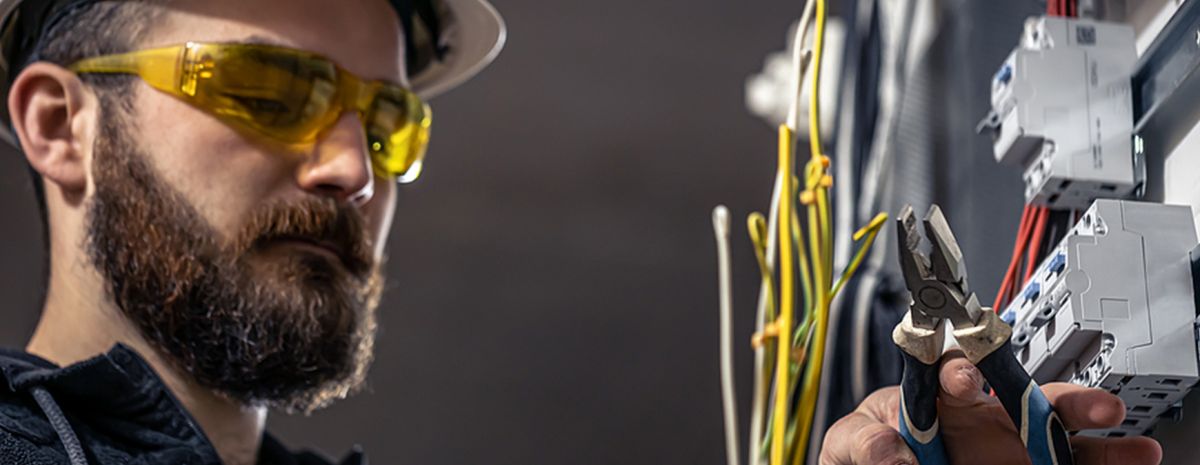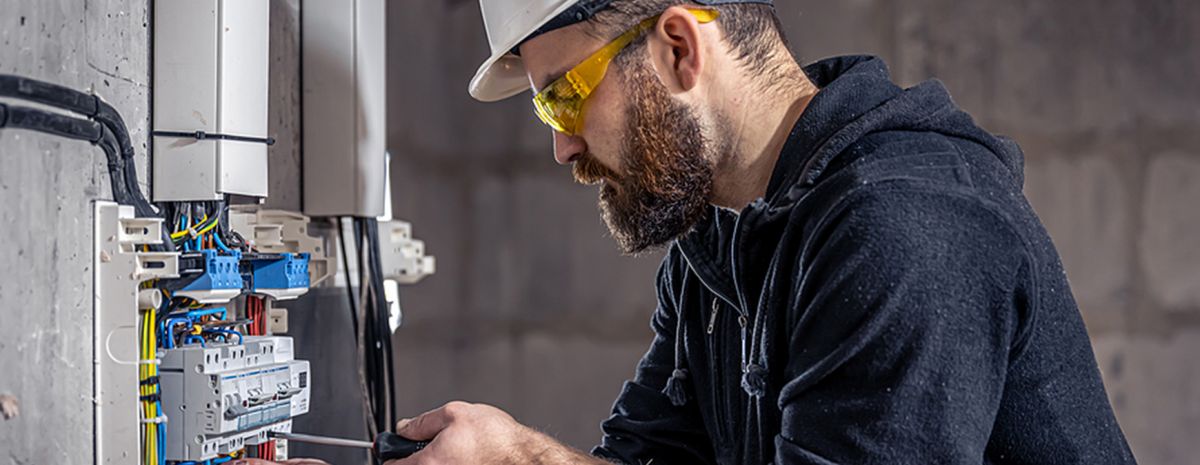RSI is a Great Training Option for Everyone
Learn more about how we can prepare you to advance your career.
As long as we have and use electricity, it’s reasonable to expect that there will always be a need for electricians. Electricity surrounds us in our everyday lives, allowing us to live and work comfortably. We rely on electricians to install, maintain and repair our electrical systems in our homes, offices and environment.
It’s likely they’ll be needed, but what could the future for electricians look like?
Keep reading for a glimpse…
Electricity Is Essential and So Are Electricians
The Department of Homeland Security designates electricians as “essential workers” in the field of public works. Essential workers conduct services that are critical to maintaining infrastructure operations. Along with exterminators, plumbers and HVAC technicians, electricians are essential to maintaining the safety, operation and sanitation of residencies.
With more people at home because of the coronavirus pandemic, electrical systems can be put under special stress. Electricians are the ones who will fix any electrical issues, such as smoke or sparks, coming from an electrical outlet.
Get Started on the Path to a New Career
Fill out our form to learn how we can help you change your life.
Electricians also help make sure that businesses and factories, such as critical care facilities, utilities and municipal agencies, can continue to operate and serve the public. The pandemic has highlighted how critical electricians are to a functioning society, now and into the future.
Electrician Shortage Suggests Skilled Worker Demand
The Bureau of Labor Statistics (BLS) reports that the demand for electricians is set to grow by 9% between 2020 and 2030.1*
Here are a few reasons why the need for electricians could outpace the workers available:
Older Electricians Are Retiring7
The BLS predicts about 84,700 electrician jobs to open each year, on average, driven partly by the need to replace workers who have exited the field, such as to retire.1
Workers leaving the field could make the electrician shortage worse. Because even after the pandemic, construction firms are clinging to their workers more aggressively. In 2020, there were 195,000 unfilled electrician positions, according to Marcum analysis of the BLS’ Job Opening and Labor Turnover Survey (JOLTS).
Electricians Didn’t Return after the Recession9
The Great Recession of 2008-2009 forced countless electrical contractors out of work, and many didn’t return.
Even when the economy rebounded, the trades had a hard time recovering, as many businesses either closed permanently or stopped investing in new workers in order to survive.
The International Brotherhood of Electrical Workers (IBEW) report that their construction members lost 25% of man-hours during the recession.
Many High Schools Focus on College over Trade School
American high schools have been gradually eliminating industrial arts and shop classes, favoring academic and university tracks instead. If shop classes are nonexistent, young people do not have the same kind of access to metal working, carpentry, drafting and electronics, and may not realize the potential of a career in the skilled trades.
On top of this, there has been a negative social misperception about the trades that has deterred many competent young people from pursuing the electrician career path.
The shortage of electrical workers has created a need for qualified electrical professionals, which could be one reason to consider electrician training. Unlike unskilled labor, increasing the pool of proficient electricians takes time because workers need to be trained and licensed. Vocational training programs are one way of starting on the path toward an electrician career.
The Future of the Electrical Industry

The future is bright for professionals in the electrical field for other reasons, as well. As the energy industry transforms thanks to new technology and sustainable power sources, there could be some exciting career options for electrical workers.
Here are some other factors driving demand for electricians:
Increase in Construction Spending
As construction demand grows, electricians are generally needed at a range of construction jobsites, including commercial buildings, government buildings, manufacturing facilities and power plants.
Even long-term prospects post-pandemic point toward more off-site construction projects and a trend toward sustainable designs.
Greater Investment in Alternative Energy Sources
A growing demand for alternative energy is expected to be a driving factor for green wiring jobs. Emerging fields in alternative power generation, such as solar and wind, could be a reason why more electricians will be needed in the future.
If government policy supports alternative energy initiatives over the coming decades, electricians would be needed to install these new systems, as well as link them to existing power grids.
Aging Infrastructure
The electrical grid across the United States is aging and needs upgrades to its more than $1 trillion in infrastructure, according to a Bloomberg article about America’s power grid. Reliability issues may create pressure to update the aging system, which, according to the article could require skilled electricians to work on the 7 million miles of transmission and distribution lines across the country.
New Technology
The adoption of automated processes and electronics in existing industries could require electricians to install, maintain and operate such functions.
Electricians who can perform many different types of tasks with diverse technology, for example, electronic systems repair and solar panel installation, are expected to have job opportunities.
Growing Areas for Green Electricians
As the world continues to shift toward green energy, electricians can expect to play an important role in that transition. Electricians may even need to adapt to changing industry needs, potentially “greening” their skillset and rebranding themselves.
Here are just a few areas of green job opportunities for electricians:
LEED Certification Projects
Using electricity more efficiently could be an area of focus for electricians. Becoming a LEED accredited professional (AP) could be one way of enhancing employability.
Lighting Upgrades
There are millions of commercial buildings in the United States that have outdated lighting systems. Upgrading these systems to be more energy efficient, such as by installing Energy Star products, could be a job for electricians.
Electrical Car Charging Outlets
As more electrical cars hit the market, there is a greater need for electrical charging stations. Some states now require all new parking lots to be equipped with charging outlets for electric cars—another potential job for electricians.
Bright Outlook for Those with Electrician Training
In short, the future for electricians is expected to be bright for many reasons:
- A worker shortage could mean there is a need for new electrical professionals to receive training and enter the field.
- Positive expectations for industries, for example construction, should guide the skilled trades sector overall.
- The country’s aging electrical infrastructure needs upgrading.
- New technologies and green building and construction could open up new doors for electricians.
Want to play a part in this exciting future for electricians? Chat with a rep from The Refrigeration School to see if electrician training could be a good fit for you. Call 866-820-0823.
According to BLS data Arizona employed 14,450 Heating, Air Conditioning, and Refrigeration Mechanics and Installers (499021) through May 2021 http://data.bls.gov/oes.
Additional Sources
1https://www.bls.gov/ooh/construction-and-extraction/electricians.htm#tab-6
This blog has been labeled as archived as it may no longer contain the most up-to-date data. For a list of all current blog posts, please visit our blog homepage at https://www.rsi.edu/blog/




